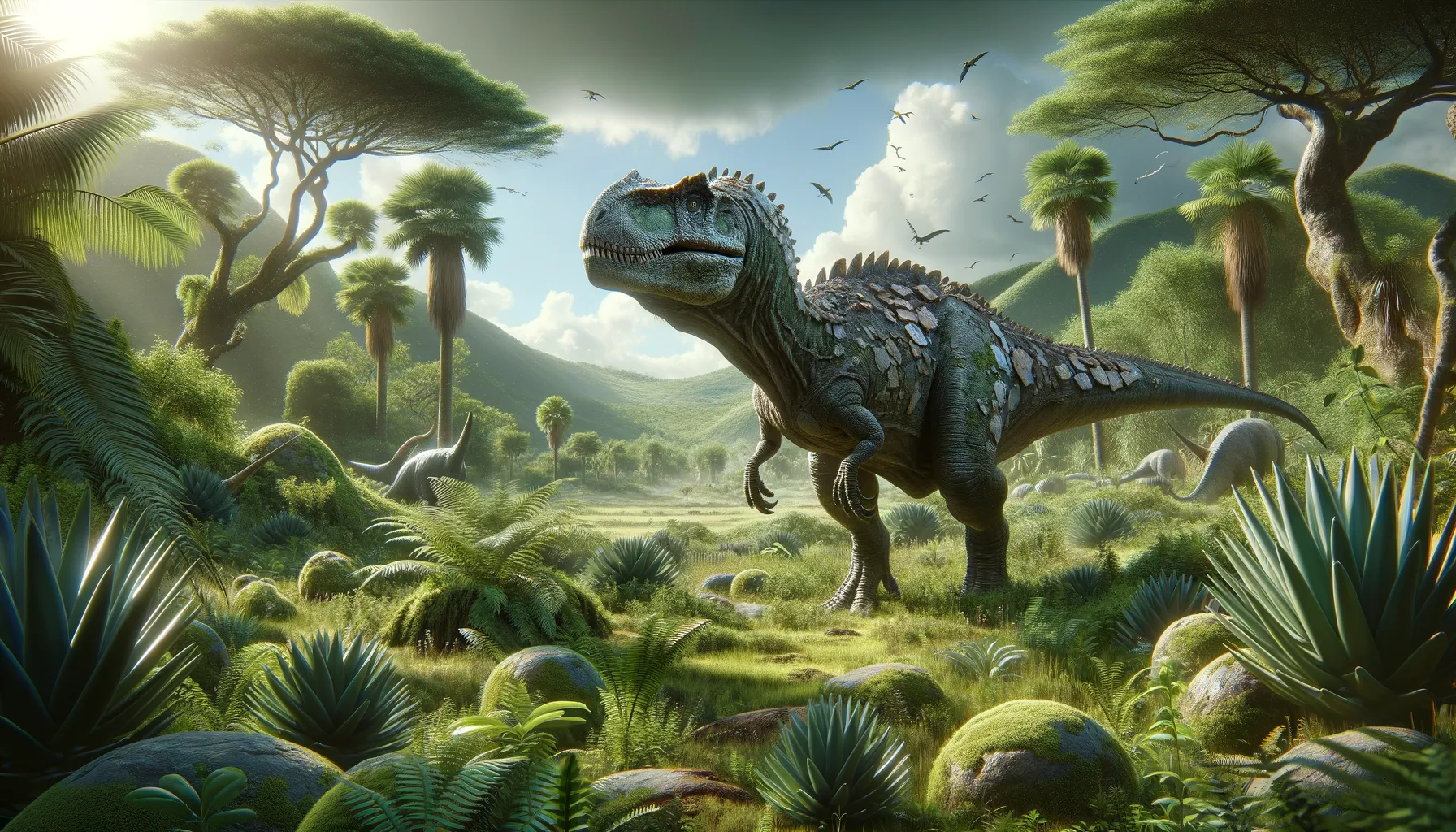
Loricosaurus
Armored mystery from the Cretaceous!
Period
Cretaceous
Length
Approximated at around 6 meters.
Height
Estimated to be around 3 meters.
Weight
Exact weight unknown, likely several tons.
Loricosaurus is a relatively obscure dinosaur genus known mostly from fragmentary remains. It is believed to have been an armored dinosaur, similar to its better-known relatives like Ankylosaurus. Despite limited fossil evidence, researchers continue to study any material available to better understand its ecology and behavior during the Cretaceous period, a time when numerous types of dinosaurs thrived.
Diet
Based on its classification with other armored herbivores, Loricosaurus likely fed on low-lying vegetation. It may have used its strong jaws to strip leaves and stems from plants.
Hunting
Loricosaurus was not a hunter as it was herbivorous. Instead, it would have foraged for food in its environment, possibly using any anatomical adaptations to protect itself from predators.
Environmental challenges
Loricosaurus had to navigate a landscape likely filled with large predators and varying plant life. Competition with other herbivorous dinosaurs for food sources would have been a constant challenge. Environmental changes, such as shifts in climate and vegetation, might have affected its survival and distribution.
Speed
Details unknown, likely slow-moving.
Lifespan
Information about lifespan is sparse.
First discovery
Discovered from fossils in the early 20th century.
Fun Facts
- Loricosaurus is a genus of herbivorous dinosaurs that lived during the Late Cretaceous period.
- Its fossils have been primarily found in South America, particularly in Argentina.
- The name 'Loricosaurus' means 'armored lizard,' reflecting its protective bony plates.
- It was a part of the Ankylosauria group, known for their armored bodies and club-like tails.
- Loricosaurus likely moved in herds, which helped protect them from predators.
- They are estimated to have been medium-sized dinosaurs, reaching lengths of about 20 feet.
- Despite being heavily armored, Loricosaurus was a plant-eater, grazing on low-lying vegetation.
Growth and Development
The specifics of Loricosaurus's growth patterns remain unclear due to limited fossil evidence. Like many dinosaurs, it likely experienced a rapid growth phase in its early years. Its development would have been closely linked to its diet and environmental conditions, affecting its survival chances.
Habitat
Loricosaurus inhabited what is now South America during the Cretaceous period. Its environment would have included a mix of forested areas and open plains. Access to water sources and suitable vegetation was crucial for its survival.
Interaction with other species
Loricosaurus likely coexisted with various other dinosaur species, both herbivores and predators. Its interactions could have included competition for resources with other plant-eaters. Predatory dinosaurs posed significant threats, influencing its social and defensive behaviors.
Natural lifespan
The average lifespan is speculative but could span several decades.
Reproduction
As with many dinosaurs, Loricosaurus likely laid eggs. Nest-building and parental care habits are not well-documented, but it may have shared characteristics with other herbivorous dinosaurs. Understanding its reproductive behavior remains a challenge due to the fossil record's scarcity.
Social behaviour
Little is known about the social behavior of Loricosaurus. It might have lived in groups, which is common among herbivorous dinosaurs for protection against predators. Group living could also aid in accessing food resources.
Fossil locations
The few fossils attributed to Loricosaurus have been found in South America. These discoveries help provide context about its geographical range during the Cretaceous. Further fossil finds are necessary to fully understand its distribution and evolutionary history.
